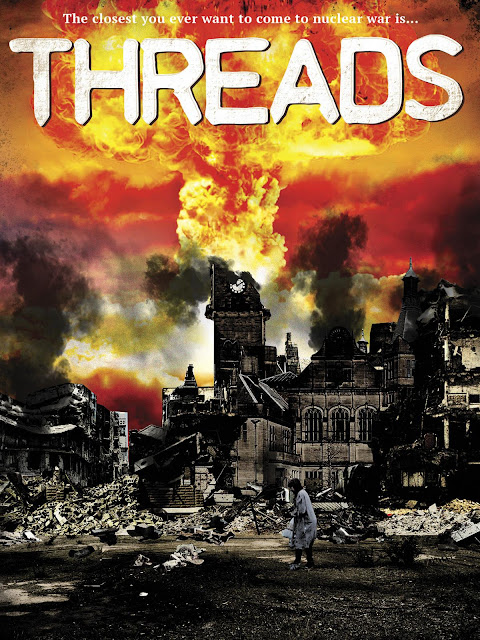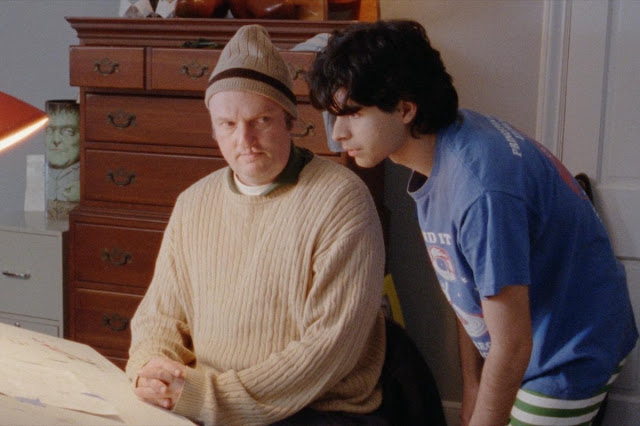Published in 2007, Barry Malzberg's Breakfast In The Ruins is a direct sequel to Engines of the Night. Published in 2007, Engines
is included (see last month's reading blog) for a total page count of 396. Each book is thus close to
198 pages. More essays on SF can be found here, dating from the 80s and
90s mostly. Often Malzberg's writing does not get to much of a point,
while at other times he scores direct hits. His essay on Ballard is an
example of both in one, as the text seems to wander about for a while
before zeroing in on why Ballard's writing matters, and what effect it
had on later writers. However, he totally dismisses the early novels,
such as The Crystal World, as being too derivative of early British SF
disaster writing. Hmm. Not quite, Mr. Malzberg.
Many
writers and editors are discussed, and the name dropping is quite
astonishing. It was a small world indeed for SF writers back in the day
when almost all stories were first published in magazines, and everyone knew everyone. The history
of SF writing is not so very complicated, as separate essays on Asimov
and Campbell illustrate. Those two writers/editors largely influenced
most of the SF that was written in the 50s, for example. For anyone
well read in older SF, this book will be a treasure to keep and reread.
Highly recommended, especially if you get the edition with both
collections.
Engines
ended with a fictional short story about a characteristic SF writer
from the 50s, as he ages and realizes that what he has done with his
life has little or no meaning (written well before Kindle editions of
practically everything ever published began to come out). In Breakfast
he writes a sequel to that story, taking the writer to his final bedroom
scene, where he exits, forever. The two stories neatly summarize what
it must have been like to have been a SF pulp writer. One doesn't even
need to read the essays to find out. But do read them.
Turning now to (mostly) Delphi Classics, I began with a wonderful novel called Gallantry, by James Branch Cabell and published in 1907. Each of the ten stories relates an episode that illustrates the title term. Most of them have overlapping characters, and should be read in sequence, but this is not your ordinary novel. Cabell at his best (which is pretty much always) cannot really be described well by this writer. This novel is like being presented with ten of the finest bon bons or aperitifs ever created. They should not be gobbled down, but rather first looked at, then lightly sniffed, then touched, and finally bitten in to and carefully chewed and swallowed. And low and behold, those flavours! Witty delicacies tell only part of the magic that await readers of Cabell. There is more solid fare, too, but it is delivered in a seemingly harmless and off hand manner, so that the reader must be careful when things appear to become frivolous; they really are not. A wonderful collection of examples of men and women fulfilling their roles in magnificently human ways. A treasure!
Next came Robert Chambers' next novel dealing with the Franco-Prussian War. Lorraine was published in 1897 and comes first in the 3-book chronology. Previous novels and short stories of his dealt with things from inside Paris. However, this time we are in Lorraine, a province of France that borders Germany, Luxembourg, and Belgium. The German attack comes through Lorraine first, and it is devastating. The Prussian War lasted from 1870 thru 1871, and the French suffered terribly. Chambers mixes in a love story between Lorraine, a young girl raised in a castle, and Marche, an American whose aunt and uncle own a big chateau not far from the castle. Though he quickly falls in love with the young French girl, she takes a lot longer to fall in love with him. Lorraine comes with a history, one that she will never fully learn. She is a very simple character, her childhood formed by having no mother, and a father who chooses to work on his scientific projects rather than spend time with his daughter. The relationship between Marche and girl, and the girl and her father, are handled well by the author, but it is his recounting of the beginning of the war that really shines here. Chambers lists his sources and military advisors. Though overlaid with a fictional plot, the war events are accurate. The brutality and senselessness of war is brought home time and again, and the civilians and soldiers who survive are left permanently scarred by events, not to mention any wounds incurred. While a 'happy' ending might seem a bit naive to readers today, this reader was very glad to come across it. Any war, anywhere, and at any period of history, is a violent and shameful event. The fact that wars are still being fought in 2024 tells us that no one learns very much from history. In this case, the Prussians might have 'won' the war, but they too suffered terrible losses. Despite much gloom and doom, this is a very rewarding novel to read. Highly recommended. It can be read for free on-line at Project Gutenberg, but I can highly recommend the Delphi Classics version.
Jump ahead 42 years and we arrive at Raymond Chandler's crime thriller The Big Sleep, published in 1939. It isn't a complicated novel, and most actions have an equal reaction. I've seen both movies many times, the 1978 version staring Robert Mitchum being the most recent screeening. This film (there is a 1946 Bogart one, too) closely follows the written word, not leaving out very much of the plot. Philip Marlowe isn't really much of a hero. He has had experience with life, and has learned to only trust himself. He is brave, somewhat stupid from time to time, but at least he is on the up and up. He doesn't take advantage of clients, only charges $25 a day (plus expenses), and seems to keeps his hands off of girls. He often does not carry a gun, though he ends up collecting some as the story moves along.
An old man hires Marlowe to keeps his two daughters out of trouble. One is separated from her husband and likes to play roulette. The other one, much younger, is not only big trouble, but also certifiable as insane. The body count is soon rising. To my surprise, Marlowe only becomes unconscious once, and is never hit on the back of the head. Movies and TV detective shows like these sort of tropes, but Chandler doesn't much go in for them. The story continues to wind like a California Pacific Coast road, taking sharp turns again and again. It's easy to get lost if you are not paying attention, or have set the book aside for several days. It's best to read this one quickly.
It's quite well done, though the writing never gets much higher than average pulp fiction standard. And Marlowe is not a very charismatic hero. Enjoyable but not essential reading.
The Club of Queer Trades is a collection of six stories by Chesterton published in 1905. The title, as explained in an introduction, examines 6 different and completely unique ways of earning a living. The prospective member must earn his living in a job never seen before. It must be different from others in significant ways, not merely a variation on an existing occupation. We read about six different achievements by members of the club. Imagine having to come up with no less than six unique occupations, one per story. The stories are often humourous, and any violence turns out to be mostly unnecessary and quite comic. The stories show Chesterton to be both highly intelligent and very witty. He slyly pokes fun at Holmes and Watson, using three main characters that recur in each story. And at the very end he brings all the characters from each story together for a wonderful conclusion. Highly recommended fun for lovers of unusual mystery stories, as we never learn the occupation of an individual until the end of each story.
Next to last came Iain Banks' 2002 novel Dead Air. Though a bit of a pot boiler, as if the author owed his publisher a book but wasn't really feeling it, the story nevertheless eventually becomes interesting, if a bit far fetched and over the top. The main character, Kenneth McNutt ("two Ts"), is a type of morning radio show shock jock. You have to like a character that describes himself late in the book as "a fuckwit with his thumb superglued to his personal self-destruct button." Don't we all feel that way sometimes. Ken gets in way over his head when he begins to secretly meet with the wife of a London crime boss for sex. Yes, he could have chosen a safer partner, but Ceel is one of a kind. The novel has several characters that are merely there to fill space, so there is no 'dead air' on the pages. However, one of my favourite characters is a friend of Ken's called Ed. Ed is a black DJ who lives at home with his mom in a tarted up old house and drives a black Hummer with blacked out windows. Try to imagine what it might be like to drive a Hummer through the streets of London, or virtually any European city. In one funny sequence Ken is doing just that with Ed. The Hummer is a left hand drive, making it even weirder to drive in London. Ken says to Ed, who is driving, that he is surprised they haven't been pulled over yet by the police. And Ed replies, "That's cuz they think you're driving, Mate." The book is a long one, and takes a lot of time to build up steam. It all takes place in London, and I think Banks was writing for a London audience (and London press reviews). It would not be a book I would recommend to someone who has never read Banks, but it does allow the author to have his say on many topics, from Nazis and holocaust deniers to what the Jews were doing to the Palestinians (and vice versa) back in 2002. Banks likely had to go back and rewrite some of it after the 911 bombings, which are part of the backdrop of the story, though not a major part of it. Though a mediocre effort from Banks, I did enjoy much of the book.
The final book of the month was Kate Chopin's second and final novel, The Awakening, from 1899. It was her final book, since most publishers disowned her afterwards, due to its themes of sexuality and freedom for the female lead character. And Edna Pontellies is a very troublesome character. Modern in many ways, more than a little selfish, she is a Kentucky girl who married into a Catholic Creole family. She lives in New Orleans, but the story opens in Grand Isle, a summer resort on the Gulf Coast for well to do families escaping the summer heat in the city. Edna is 28 and has two children. She comes to realize that she does not love her husband, nor wish to be around him very much. It is fortunate for her that he travels a lot. She falls in love with Robert, whose mother runs the summer camp on the Isle. Robert is 25, and very much appreciates the company of Edna. They become splendid friends over the summer, and Edna slowly awakens to her feelings of love for the young man, the first time she has felt such feelings. When Robert realizes what is happening, he heads to Mexico looking for work. We spend a lot of time inside Edna's head, and truly there isn't a lot going on there except confusion. She certainly has no precedent, so help from friends in any shape or form is not available. When Robert returns several months later, he does his best to keep his distance. Edna's passion for him now totally consumes her.
Critics (male) found Edna to be mostly a repulsive character, mostly for not being satisfied with a loveless marriage and her two children. Though she loves her children, she is happiest when away from them. Look to Ibsen for similar themes, and much later Woolf. But a strongly Catholic outlook at the time had no sympathy for a female character like Edna. Critics were mostly ruthless, though she did find some support, mostly from women. She never was allowed to publish again. Another great victory for a patriarchal society tied to the church. The only revenge we can have today is to read the novel and marvel at Chopin's strength for writing such a story at that time. And we might also continue to support women writers, film directors, artists, etc.
Mapman Mike



























